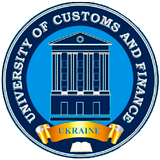FEATURES OF BOUNDARY ELEMENT METHOD APPLICATION FOR SOLUTIONS OF BOUNDARY-VALUE PROBLEMS IN MOVING BOUNDARY DOMAINS
Abstract
Summary. The motion of a fluid with a free surface is the subject of a separate section of theoretical hydromechanics. The development of this direction is stimulated by numerous applications to modern technologies, especially for the design and operation of hydraulic structures, shipbuilding and navigation, the study of ebbs and flows, tsunamis and other natural phenomena. The complexity of setting and solving this class of problems lies in the presence of a moving boundary of the solution area, called the free surface. From a mathematical point of view, the peculiarity of the considered class of problems lies in a specific non-linearity: a solution-dependent change in time of the shape of the solution area.
Assuming the fluid to be incompressible and in viscid, under the conditions of the potentiality of the field of body forces and the potentiality of the flow at the initial moment of time, we obtain that the flow is described by the Laplace equation for the velocity potential with the traditional boundary conditions of non-flow at the solid boundaries of the flow region, as well as special boundary conditions at the free boundary, one of which, the Cauchy-Lagrange integral, contains a quadratic nonlinearity in the flow velocity. The assumption made about the potentiality of the alternating field of body forces greatly simplifies the formulation of the problem and allows us to consider the problem formulated above as a model one for a wide class of fluid flows with a free surface. For the numerical solution of the problem described above, a regular version of the boundary element method was used. The use of regular algorithms of the boundary element method makes it possible to bypass numerous computational limitations and improve in one way or another the approximations of the shape of the moving boundary, known and unknown functions on it. To do this, the Laplace equation was transformed into a boundary integral equation of potential theory, and the time interval in which the flow field is studied was divided into the corresponding number of sufficiently small intervals. At each time step, the resulting boundary integral equation was solved using the standard algorithm of the boundary element method. The calculation of the new position of the free boundary of the flow was carried out using the Euler scheme.
References
Sretenskij L. N. Teorija volnovyh dvizhenij zhidkosti.– M.: 1936. – 304 s.
Logvinovich G. V. Gidrodinamika techenij so svobodnymi granicami: Monografija. – K.: Naukova dumka, 1969. – 208 s.
Poljakov N. V. Metody reshenija nelinejnyh kraevyh zadach. Zadachi pronikanija: Monografija. – D.: Izd-vo DNU, 2005. – 356 s.
Rubinshtejn D. I. Problema Stefana: Monografija. – Riga: izd. Zvajgzne, 1967. – 457 s.
Mejrmanov A. M. Zadacha Stefana: Monografija. – Novosibirsk: Nauka, 1986. – 239 s.
Rjadno A. A., Minosjan Ja. P. Soprjazhennye zadachi teploperenosa v sistemah tel s podvizhnymi granicami: Monografija. Dnepropetrovsk: Izd-vo DGU, 1983. – 116 s.
Brebbija K., Telles Zh., Vroubel L. Metody granichnyh jelementov – M.: Mir, 1987. – 524 s.
Benerdzhi P., Batterfild R. Metod granichnyh jelementov v prikladnyh naukah – M.: Mir, 1984. – 494 s
Evdokimov D.V. Razrabotka prjamyh reguljarnyh algoritmov vychislitel'noj teorii potenciala s tochkami kollokacii vnutri oblasti reshenija Vostochno-Evropejskij zhurnal peredovyh tehnologij, 2015, №2/7 (74). – S. 16-25.
Brazaluk Ju. V., Goman O. G., Еvdokimov D. V., Kochubej O. O., Poliakov M. V. Metod granychnyh elementiv v zadachah gidrodynamiky ta teploprovidnosti Dnipro: Lira, 2019. – 228 s. (monografija).

This work is licensed under a Creative Commons Attribution 4.0 International License.

 ISSN
ISSN 




